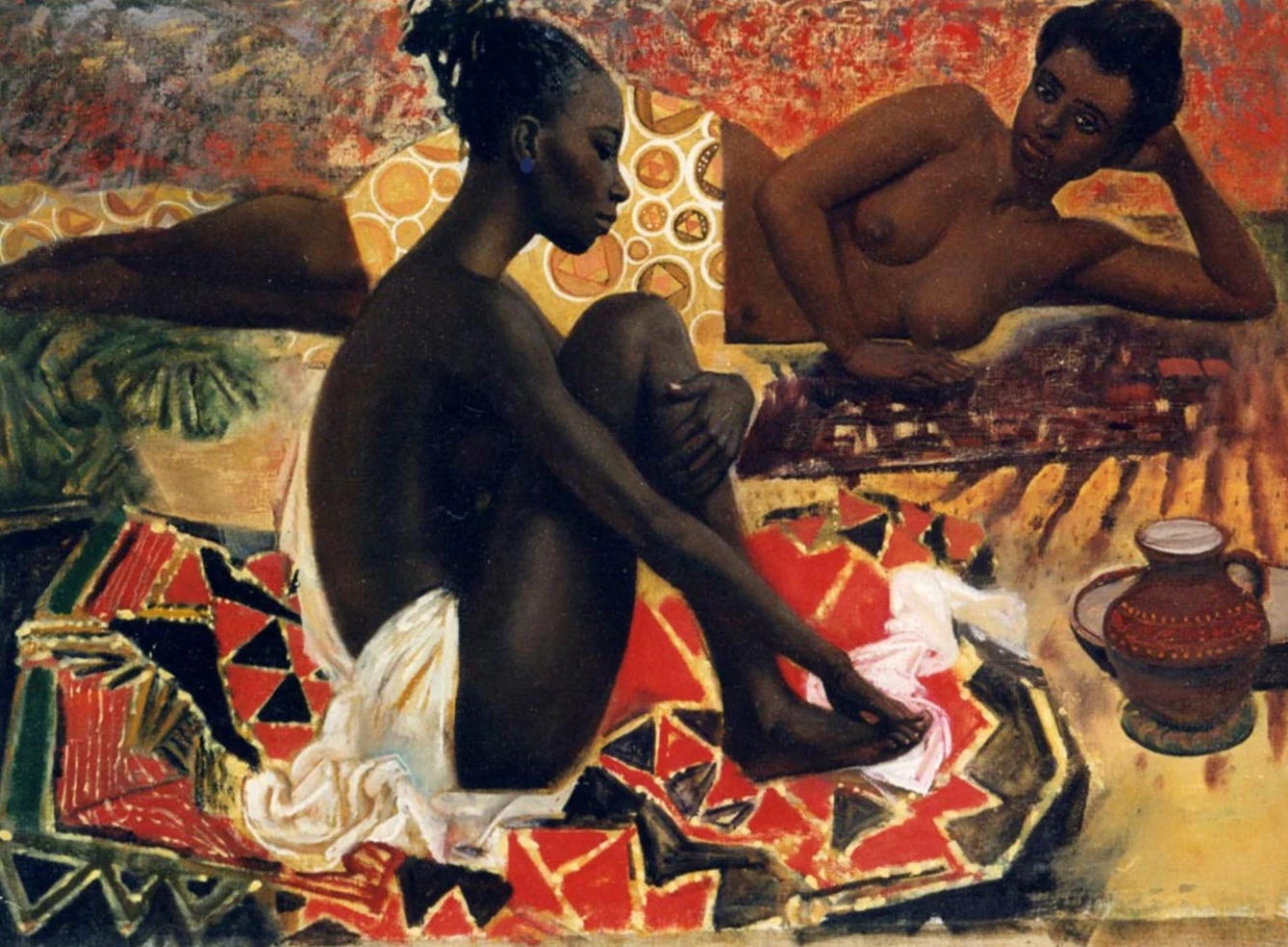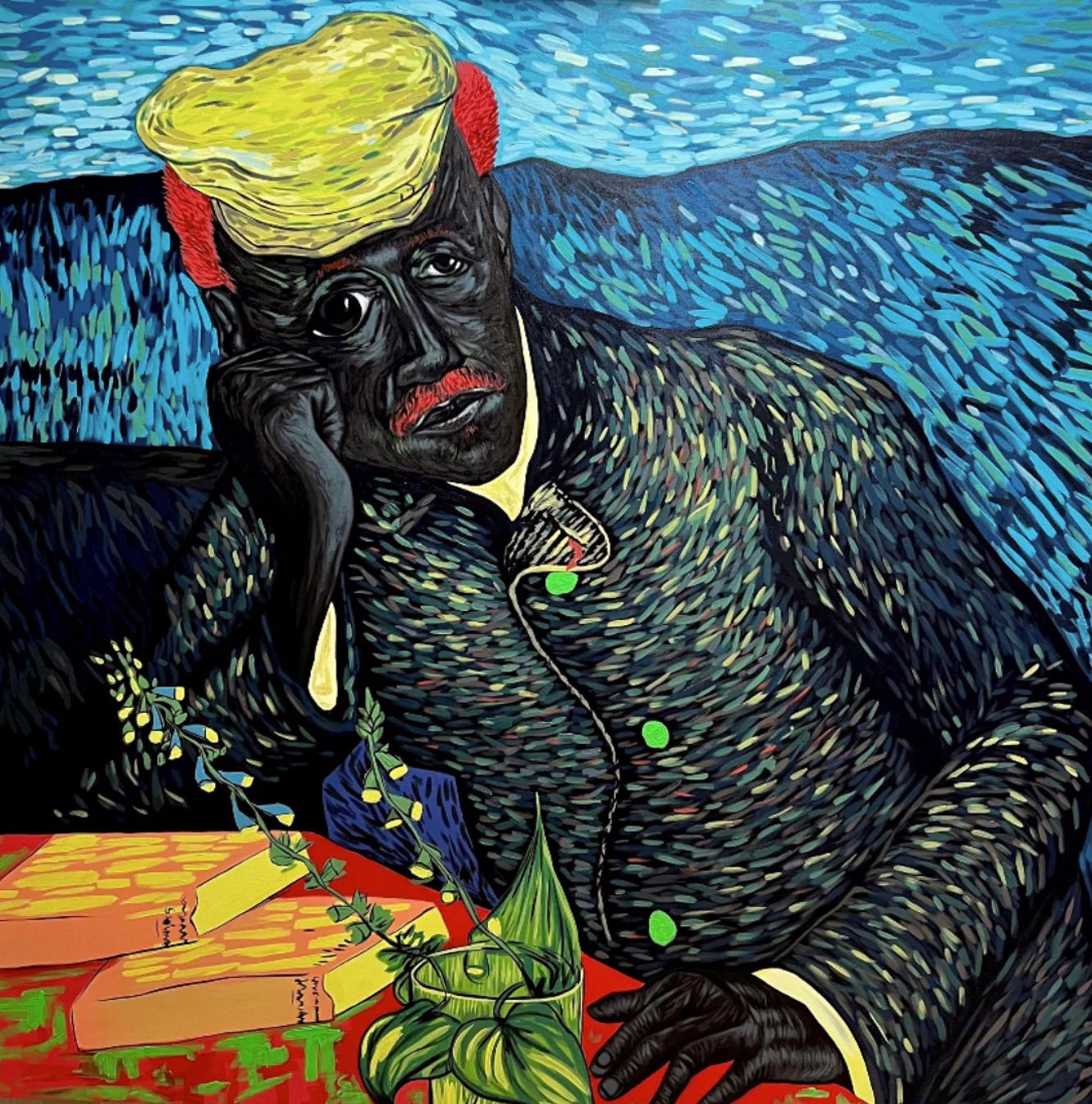Middle Act: Unbelonging
How does it feel to watch a play where you know the beginning and the end—but somehow have no memory of the in-between?
(This is a curatorial note for a hypothetical exhibition I wish I could set up.)
This exhibition is an ode to the middle part of histories that have been made to be forgotten. It retells the non-linear narrative which embraces the ruptures and discontinuities of the past. These artists come from different parts of Africa, reclaiming the sites of repression as sites of resistance. Colonisation holds such a powerful ideological hegemony that it has become a part of the social fabric of most societies, without our realisation. As Franz Fanon says, “The glances of the other fixed me there...I demanded an explanation, nothing happened, I burst apart. Now the fragments have been put together again by another self.”— these lines haunt the cultural identity of countries in the continent, whose pasts have been reduced to Western binaries—period of barbarism vs period of civilisation, primitive economy vs industrial economy etc. The sentimental and grief-marked experiences of retelling hidden histories are a common project in the works of these artists, whose identities are immersed deeply in their practice.
Untitled, Aboudia, 2021
Aboudia, an artist from Ivory Coast, centres his contemporary artworks around children who live in the violent streets of Abidjan, facing dispossession of lands, surrounded by an environment of ecological and economic migrations. Families are broken apart due to the aftermath of colonial policies, the artist through bold colours and intuitive use of charcoal and chalk draws the viewer to these stories.
Hairdressers, Tefsay Negga
Dreams, Tefsay Negga
Tesfay Negga, an Ethiopian artist brings to light the overlooked yet intrinsic character— the African woman. Placing them in their homes and vulnerable spaces, the women’s body posture and eyes convey a sense of disquieting grief, reflective of the nation's mood. Titling the works “Hairdressers” and “Dreams”, it is a humble ode to the resilience of the women who often were pawns in the socio-political landscapes.
In My Mood, Sessy Elangwe
Sessy Elangwe, a Cameroonian artist, beautifully puts forth a pluralistic agenda, challenging the Western way of seeing contemporary art and portraiture. Art has always been a civilising tool utilised by colonial empires to oppress Indigenous art as less than while internalising the visual language and values of the colonialists. He flips this gaze by taking the revered Potrait of Dr. Gachet by Van Gogh and painting him and his clothes black.
Lopango Ba Teka, 2024, Dolet Malalu
Na Molokai, 2024, Dolet Malalu
Another artist who pays tribute to the African way of living is Dolet Malalu, a contemporary and street artist from Congo. Using graffiti, Malalu paints scenes of urban life and culture, showing scenes of leisure and playfulness. While carrying traces of colonial behaviours such as way of dressing, the artist makes the character their own by highlighting African customs and norms they are engaged in—sharing a sense of community.
Ultimately, this exhibition and curations unfold the scripts and landscapes of characters lost and replaced, dusted and glossed over. It encourages the viewer to engage with the Middle Act- a coercive and conscious unbelonging subjected to the common people across Africa. However, by celebrating the artist’s expression and labour— the power is taken back and their rightful space is reclaimed. As you near the end, the curtains may soon be drawn but there is a message of hope you should not miss— the power to write the final act is with you, hopefully, you’ll remember the beloved characters this time.
References
https://greatbanyanart.com/
https://www.christies.com/en/stories/ivorian-artist-aboudia-512532850a564942861309f960e0c775










